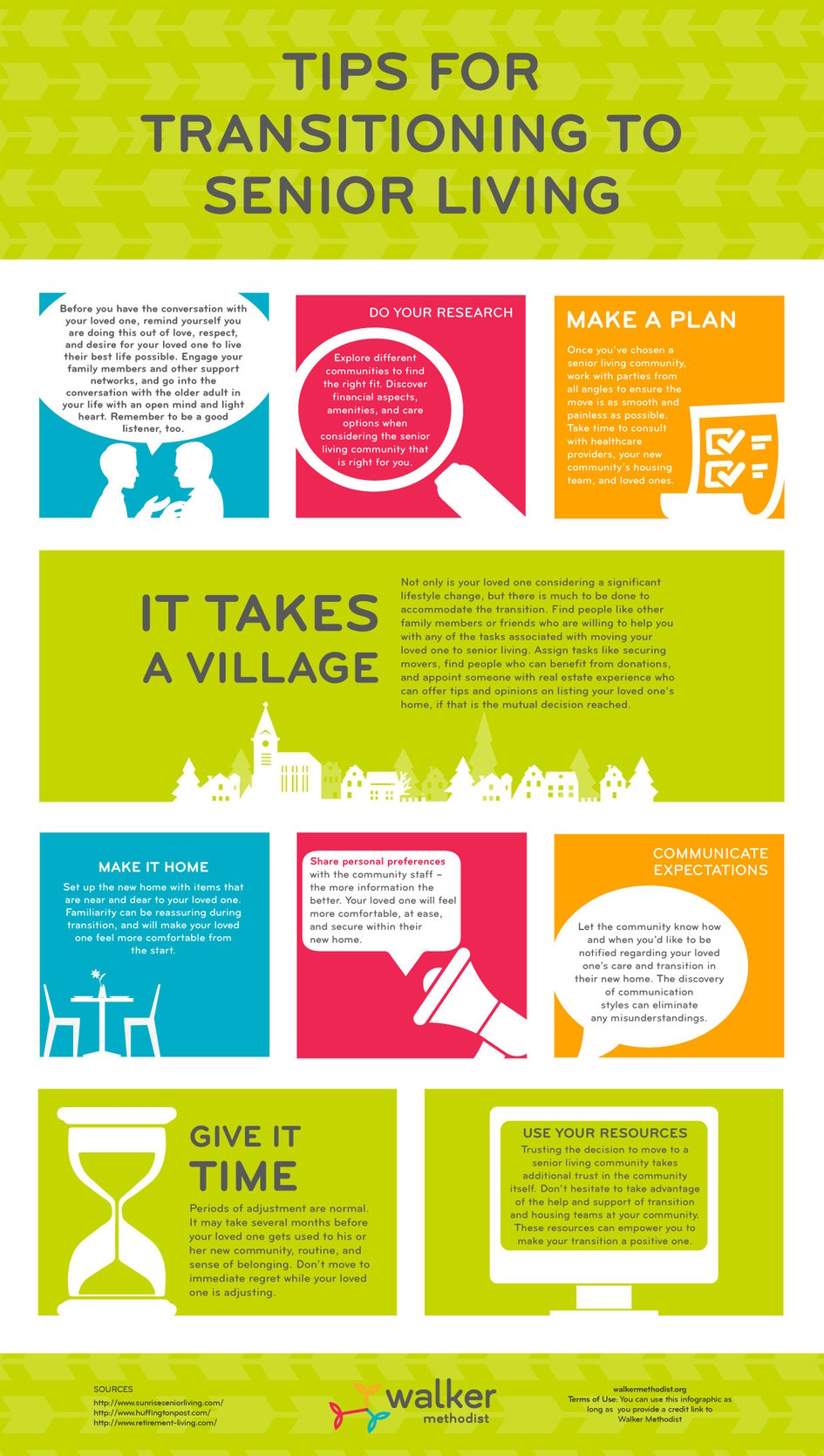Tips for Transitioning to Senior Living
Shelli Bakken | Feb 3, 2016
Regardless of age, moving is can be an overwhelming and daunting task. In the event of transitioning to senior living, emotion and stress add to the process. At Walker Methodist, we understand and have helped countless families make the senior living transition to our communities. We have a simplified, three-step plan to help your loved ones move into their new home, complete with a infographic to give you a better picture of the transition to senior living.
Step One: Make the Decision
After the initial conversation with your loved one and other family members, get into research mode. Minnesota has hundreds of senior living communities to choose from. But where do you start? Start by downloading our “30 Questions to Ask on a Tour” here. We developed this complimentary tool to help families in the same position. At Walker Methodist, we have 10 vibrant senior living communities across the Twin Cities metro area. We offer differing levels of care at each community ranging from assisted living to retirement communities. What your loved one requires for care as well as freedom and independence are all considerations and will be best matched to safety and peace of mind.
Step Two: Put the Plan Into Motion
Once you’ve chosen a senior living community together, determine what the transition will hold. If there’s a waiting list, use that timeline to gauge the rest of the process. If your loved one is currently at home, decide what will be done with the house and property. And one big important task: find help. Aside from the physical work that needs to be done, the emotional piece also requires a little support from those around you to help with both aspects. Outline the plan for the move including a timeline beginning from anticipated move in day backed up to this day. It will help give you and your loved one a time to process as well as structure to what needs to get done. Make sure you visit with family physicians and other healthcare professionals to alert them to the move so appointments and medication needs can all be met prior.
Step Three: Transitioning
This final step is both the easiest and the hardest. Easiest because the “hard” work of choosing a community, establishing a care plan, and physically transitioning your loved one out of their home is behind you. This step is the hardest because the work isn’t over by any means. Like bringing a baby home from the hospital or moving into a college dorm, a change of routine and location is hard no matter the stage of life. Plain and simple, the transitional period will be hard for you and your loved one. That’s where Walker Methodist comes in. Our on-staff transition team works with new residents and their families to ensure things go as smoothly as they can. We work to establish a routine and a new normal for residents. We listen to their needs, their concerns, and keeps families apprised along the way.
We encourage families to be gentle – both on themselves as well as on their loved ones who are now part of our family. Your decision to transition to senior living means you made the best decision on behalf of your loved one. It’s natural to feel guilt or sadness at the thought of this process, but look for the positive. Think of the memories that will be made, the friendships that will blossom, the quality of life that will be maintained, and the safety and security as an added benefit to the transition.

